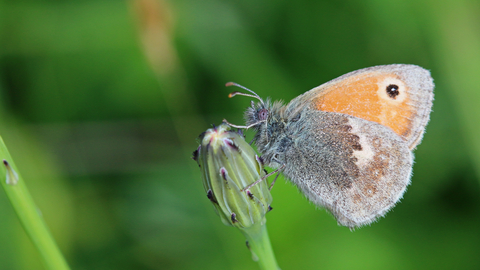
Small heath ©Wendy Carter
Small heath
Scientific name: Coenonympha pamphilus
The small heath is the smallest of our brown butterflies and has a fluttering flight. It favours heathlands, as its name suggests, as well as other sunny habitats.
Top facts
Category
Stats
Wingspan: 3.3-3.7cmConservation status
Priority Species under the UK Post-2010 Biodiversity Framework.
